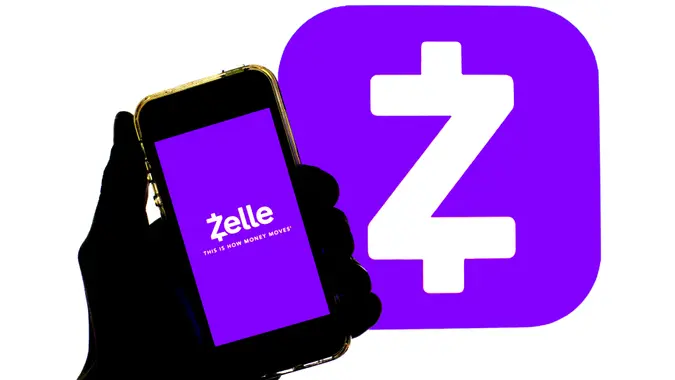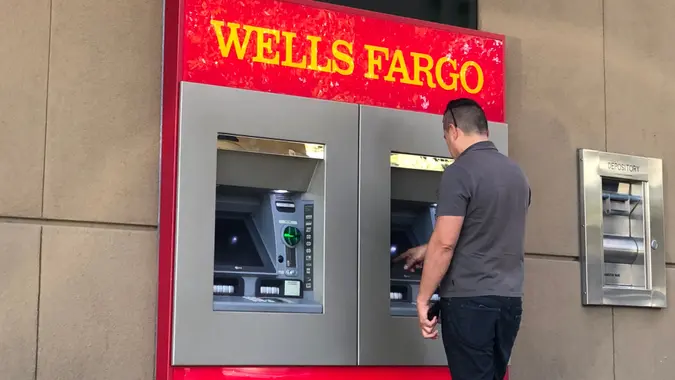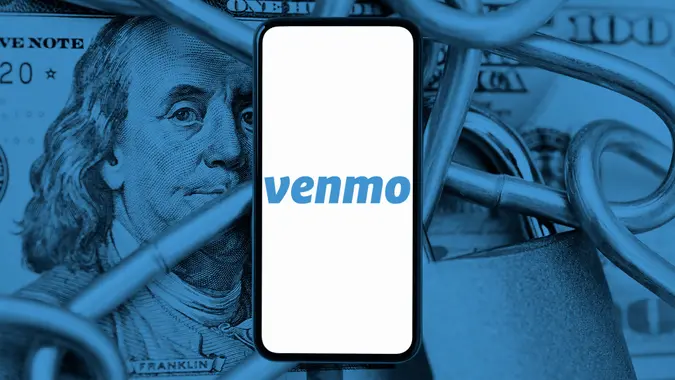How To Maximize Your Savings By Effectively Using Your Bank’s Budgeting Apps

Commitment to Our Readers
GOBankingRates' editorial team is committed to bringing you unbiased reviews and information. We use data-driven methodologies to evaluate financial products and services - our reviews and ratings are not influenced by advertisers. You can read more about our editorial guidelines and our products and services review methodology.

20 Years
Helping You Live Richer

Reviewed
by Experts

Trusted by
Millions of Readers
Many banks offer free budgeting tools, which you can use to supercharge your financial management and potentially grow your savings.
If you aren’t sure where to get started with your bank’s budgeting app, you are in the right place. Explore how to make the most of your savings with the help of your bank’s budgeting app below.
Track Your Expenses
When you want to make a big financial change, like increasing the amount you save, it makes sense to start by tracking your expenses. It’s sometimes difficult to know what changes you should make if you aren’t sure where your funds are going in the first place.
Luckily, many banking apps include tools to help you track your expenses. In some cases, your bank’s budgeting tools will automatically track your spending. When you take a look at this data, you might be surprised by what you find. Generally, first-time spending trackers will be surprised to realize exactly where their funds are going.
For example, you might notice that your streaming service costs add up to more than you originally thought. Or you might notice that your daily snack at work adds up to a significant portion of your food budget. Or you might discover that your housing costs eat up more than they should. As you take a look at this data, you should start looking for ways to cut back on spending.
Set Savings Goals
In addition to getting clear on where your funds are currently going, it’s a good idea to set savings goals. While it’s tempting to simply say that you want to save more money, it’s important to get specific on how much you want to save and what you are saving for.
Getting specific about your savings goals can also help you be realistic. For example, you might want to save for a vacation next year. If you want to set aside $100 for ten months, you’ll have $1,000 ready to spend when the vacation comes around. But if you want to have $5,000 available, you’ll need to up your monthly savings goal to $500. Based on your spending, you’ll have a better idea of what savings goals might be realistic for your situation.
Some banks offer tools to set savings goals. If your bank’s budgeting tools allow you to set savings goals, don’t hesitate to play around with your numbers. Set up savings goals that matter to you within the goal-setting tool, simply putting your goal in writing might help you stick to the plan.
Build a Budget
With both your spending data and your savings goals, it’s time to use your banking app to build out your budget. The key is to find a balance between your savings goals and your spending. Generally, it’s helpful to kick off your budget by including unavoidable costs, like housing and gas, and then adding in your savings goals. After you’ve added both to your budget, start to look at your discretionary expenses, like eating out and entertainment.
As you tinker with your budget, you’ll likely have to make some compromises. Remember that your original budget gives you a place to get started. But if you need to adjust categories along the way, that’s okay. Don’t be afraid to make necessary changes as you move forward.
For example, let’s say you start out with a budget including $200 for savings and $200 for discretionary expenses. If you discover that you are comfortable getting by with less money for discretionary expenses, then you might decide to bump up your savings goal to $250 and leave $150 for discretionary expenses. Within most budgeting apps, you can easily institute changes when you need to.
Stick to the Plan
With your budget set up, it’s time to stick to the plan. Many budgeting apps allow you to track your spending in certain categories throughout the month. This allows you to check in on where your spending is at any time. Use this feature to make sure you don’t overspend in a particular area.
For example, let’s say you set aside $200 for eating out. If you check your budget halfway through the month and realize you’ve already spent $150 on eating out, that might mean you need to cut back on spending in this category for the rest of the month.
Do your best to stick to the plan. But don’t be too hard on yourself if you make a mistake. Everyone slips up with their budget from time to time. Instead of beating yourself up or throwing your hands up, just do your best to get back on track.
Track Savings Goals
If you are able to stick to your budget, you’ll also see progress toward your savings goals. Since many bank budgeting apps offer a way to track progress toward your savings goals, you might be able to easily see how far you’ve come. Take time to celebrate your wins. After all, all progress is good progress.
What To Do If Your Bank Doesn’t Have a Budgeting App
Some banks don’t offer budgeting app features. That’s okay! If you work with a bank that doesn’t offer this feature, you can sign up for an external budgeting app to help you stay on top of your funds. Some of the top budgeting app options include EveryDollar, YNAB, and Honeydue.
Takeaway
Diligently working with a budgeting app can help you track your expenses, map out your budget, and achieve your savings goals. If your bank offers worthwhile budgeting tools, don’t hesitate to take advantage of the opportunity to take charge of your funds and make progress toward your savings goals.
More From GOBankingRates
- Nearly 1 in 3 Americans Hit by a Costly Holiday Scam, Norton Survey Shows -- How To Avoid This
- Here's What the Average Social Security Payment Will Be in Winter 2025
- How Middle-Class Earners Are Quietly Becoming Millionaires -- and How You Can, Too
- The Easiest Way to Score $250 for Things You Already Do
 Written by
Written by  Edited by
Edited by 
























